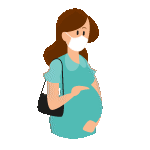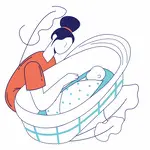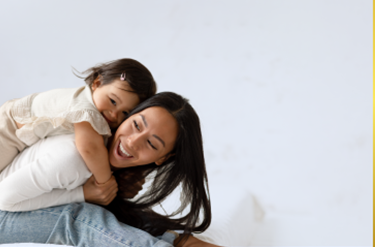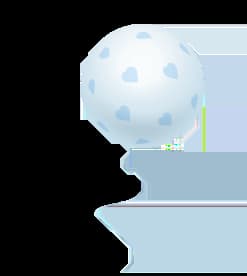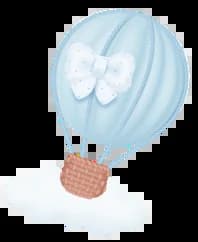Self-examination for breast cancer is a good practice as it helps you understand more about your body and what to expect. While a mammogram detects cancer before you can notice any changes, a regular self-exam in women has been found helpful in detecting cancer. Oftentimes, lumps or other changes can be benign, but it’s a good habit to know what is normal and do self-checks so any abnormalities can be immediately addressed.
It is recommended to conduct a breast self-examination at least once a month. You can start by getting familiarized with your own body and then check every month if there have been any changes. Some changes in a woman’s breasts are noticed at various points in the menstrual cycle so you can ask your doctor about what’s normal and what isn’t. However, an early detection or simply ruling out cancer, due to self-examination, can not only ensure a healthier life but also take away anxieties around breast cancer.
Here are some things to keep in mind while conducting a self-examination
- Ask your doctor: You can ask your doctor for a demonstration if you are unsure about where to start. Your doctor can use charts, diagrams and a physical demonstration of how to conduct a self-exam.
- Choose the right time: Menstrual cycles can cause changes in the breast tissues so it’s best to conduct the exam the week after your period ends, to rule out any abnormalities arising due to menstrual cycles.
- Begin with a visual exam: First and foremost, it’s important to do a visual check of your breasts - look for any inverted nipples, dimples, changes in shape, size etc. You can do these visual checks in two positions - with your arms raised and palms pressed against each other, and with your arms resting on your hips. Any changes in shape, size, texture etc. should be immediately noted.
You can conduct a breast self-examination in 3 positions
- Lying down - in this position, the breast tissues spread out evenly along the wall of the chest, thus making the examination easier. Place a firm pillow under the right shoulder and arm and tuck in the right arm behind the head. Now conduct the self-exam with your left hand. Reverse for the other side. Use light, medium and firm pressure with your palms or the pads of the middle fingers to check for any abnormal growths, lumps, knots etc.
- In the shower - by lathering up you can move your hands more easily. When in the shower, use the pads or flats of your three middle fingers to do the examination. Check both the breasts and the armpit areas and use three levels of pressure - mild, medium and firm. Check for any lumps, hardened knots or any other occurrences that were previously absent. Make sure that you cover the entire area - you can visually imagine the breasts to be like a clock and cover the entire surface area.
- While standing up in front of a mirror - this position is convenient for both a visual check and a physical exam. While standing in front of the mirror, check for any visual differences like inverted nipples, dimples etc. Then use your palms or the pads of your fingers to apply varying levels of pressure to check for lumps and knots.
Here are some things to look for while doing a self-exam for breast cancer
- Tenderness of the nipples or a lump near the breast or armpit
- Change in the skin’s texture - big pores etc.
- Any changes in the shape or size of the breast
- Swelling or shrinkage of breast
- Inverted or inward nipples
- Any discharge from nipples
- Skin that is red, swollen, itchy or scaly
If you notice any of these symptoms, or any changes that were previously not there, you should immediately consult your doctor. While many of these can have other benign reasons for the changes, it is still a good idea to get these checked by a professional. Based on your symptoms, your doctor may suggest mammograms and other tests that can help detect or rule out cancer, so the necessary course of action can be taken.
Thus, it is a good idea to understand and conduct regular self-exams for breast cancer, to ensure a healthier life. However, if you do find any abnormalities, it’s important to stay calm and not panic and consult the doctor at the earliest. Remember that the self-exam is just the first step and not the most reliable way to detect cancer - only your doctor can detect the same with the right tests, Thus, stay relaxed and conduct all the prescribed tests before panicking or starting medication. After all, many of these can be harmless and treatable and the self-exam is just ensuring that you keep a check on your health.
FAQ's
Q. What is a breast self-examination?
Ans.A breast self-examination is a simple at-home practice where women check their breasts for lumps, changes in size, shape, or texture. It involves both visual observation and physical touch to identify abnormalities. Doing this regularly helps women become familiar with their bodies and notice unusual changes early.
Q. How often should I do a breast self-exam?
Ans.It is recommended to conduct a breast self-examination once a month. The best time is a week after your menstrual cycle ends when breast tissues are least tender. This makes it easier to detect unusual changes without mistaking them for natural variations caused by hormonal shifts.
Q. Why is breast self-examination important?
Ans.Breast self-examination helps women understand what is normal for their bodies and recognize changes early. While not a replacement for mammograms, it increases awareness and promotes timely medical consultations. Early detection often leads to better treatment outcomes and reduces anxiety by ruling out possible health concerns early.
Q. What is the right age to start self-exams?
Ans.Women can begin monthly breast self-examinations in their 20s. Starting early builds awareness and familiarity with normal breast structure and changes during menstrual cycles. This habit ensures that any abnormal growth, lump, or unusual difference is noticed early and checked by a healthcare professional for proper evaluation.
Q. What signs should I look for during a self-exam?
Ans.During a self-exam, look for lumps, knots, tenderness, skin changes, inverted nipples, or unusual discharge. Also notice swelling, redness, or texture changes. Any unusual difference compared to your normal breast condition should be noted. While many changes are harmless, reporting them promptly to a doctor is essential.
Q. What positions are best for self-examination?
Ans.Self-examination can be done in three positions: lying down, standing in front of a mirror, and while in the shower. Each position helps detect changes differently. Lying down spreads breast tissue evenly, the mirror aids visual checks, and the shower allows smooth hand movements for detailed examination.
Q. Can breast self-exams replace mammograms?
Ans.No, self-exams cannot replace mammograms. Mammograms can detect cancerous changes much earlier than self-exams. Self-examination is an additional practice that encourages awareness and early detection of visible or palpable changes. Both methods work best together, helping women stay proactive about their breast health and consult doctors when needed.
Q. What should I do if I find a lump?
Ans.If you find a lump or any unusual change, stay calm and do not panic. Many lumps are harmless or related to hormonal changes. However, consult your doctor immediately for a professional check-up. Your doctor may recommend tests like a mammogram or ultrasound to confirm the cause.
Q. Are breast changes during the menstrual cycle normal?
Ans.Yes, many breast changes during the menstrual cycle are normal. Breasts may feel tender, swollen, or lumpy due to hormonal shifts. This is why doctors recommend doing self-exams a week after your period ends. At this time, breasts are least affected by hormonal variations, making checks clearer.
Q. How can a doctor help with self-examination?
Ans.If you are unsure how to start, ask your doctor for guidance. They can demonstrate the correct technique using charts, diagrams, or physical demonstrations. Doctors can also explain what changes are normal and what isn’t. Professional advice ensures your self-exams are effective and reduces unnecessary worry or confusion.



